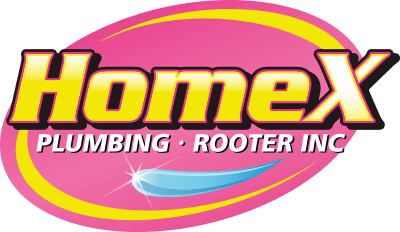Plumbing issues are common during the winter season. No matter where you live, pipes can freeze and burst when temperatures drop below freezing. Your plumbing fixtures and appliances may also not work as well in extreme cold. Here are some common winter plumbing issues and how to address them.
Fixing Common Winter Plumbing Problems
Frozen Outdoor Pipes
Outdoor pipes are most vulnerable to freezing. Frozen lines, especially less frequently used ones, may go unnoticed, but you can prepare them for winter by:
- Covering Outdoor Bibbs: After removing the hose and draining the water, cover the bibb with insulated foam; close the valve supplying the outdoor hose as well.
- Insulate Outdoor Lines: Pipe insulation is easy to find and install and can easily prevent pipes from freezing.
- Upgrade Hose Spigots: Those that face downward prevent water from pooling up inside and freezing.
If you see a frozen hose bibb:
- Open the water valve
- Place towels and rags around the hose bibb base
- Pour boiling water over the towels
- Heat the bibb base with a hair dryer or heat gun
Frozen Indoor Plumbing Lines
If a pipe in your home freezes, you may not get water from faucets or showers, and the line can burst, causing a flood. You can prepare by:
- Allowing faucets to drip on cold days
- Open cabinets to let warm air circulate around pipes
- Install pressure relief valves
- Insulate water lines throughout your home
When a pipe does freeze:
- Find Where the Problem Is: Turn on faucets to locate the problem area; if none are working, the main line may have failed.
- Open Impacted Faucets: Opening those for the frozen line relieves pressure; then you can work to unfreeze the line.
- Apply Direct Heat: Place heat lamps, hair dryers, space heaters, electric blankets, or heating pads near or round the frozen pipe.
Water should start flowing from the faucet; when it does, close the valve. If a pipe has burst, shut the main water valve and contact a plumber.
Clogged Kitchen Drains
Sink drains are more prone to clogging when frequently used, like during the holidays. If you have a kitchen sink clog:
- Turn off the garbage disposal at the wall switch and main breaker.
- Check the disposal for obstructions, using tongs or pliers to remove any debris.
- Move seized gears back and forth with an Allen wrench to determine if there’s an obstruction; follow the previous step if so.
- Wait 15 minutes to prevent overheating.
- Press the reset button, restore power, and turn the disposal on.
Faulty Water Heater
A hot shower sure provides relief from winter cold. But the stress and demand on water heaters can cause them to fail. If you’re not getting enough hot water:
- Check whether the thermostat is set properly.
- Inspect for power outages, closed gas valves, and other electrical/mechanical issues.
- If the thermostat’s limit switch has tripped, reset it.
- Consider replacing a water heater that’s more than 10 years old.
Sump Pump Isn’t Working
If the pump isn’t evacuating water from low-lying spots in your home, it may be frozen; clogs and low temperatures can cause it to back up as well. If it freezes, disconnect the power supply and:
- Remove ice, snow, or leaves around the discharge line.
- Melt a frozen discharge line with direct heat from a blow dryer or heat gun.
- Use a bucket or large cup to empty water from inside the pump.
- Apply a wet/dry vacuum to remove the rest of the water.
- Disconnect the drain line and pour hot or boiling water in to melt any clogs.
Basement Floods After Snow Melts
A rapid snow melt can lead to basement flooding. Whether this is caused by an overloaded sump pump, poor drainage, or a foundation crack, the water needs to be removed fast. To resolve the initial problem:
- Remove as Much Water as You Can: You can prevent major water damage and mold by drying the area with a wet/dry vacuum, submersible pump, or a bucket; dry the air with a dehumidifier or commercial fan.
- Remove Water Damaged Items: If any furnishings or equipment have been water damaged, remove them and dry immediately. Once the area is fully dry, inspect for water leakage.
Frozen Septic System
While buried underground and insulated, a septic tank or line can freeze if there’s a leak, a full tank, or poor soil coverage. If you suspect a problem:
- Open the septic tank’s access door.
- Find a hose with a brass nozzle and backflow preventer.
- Connect the hose to a water supply.
- Push the hose into the septic pipe outlet.
- Turn on the water to melt the blockage
- Once the system is unfrozen, remove and clean the hose.
*Never apply heat to septic pipes, as sewer gas is highly flammable.
Contact HomeX for Help
If you find yourself with these or other common winter plumbing problems, HomeX can fix them. Our team of plumbing professionals is licensed, bonded, and insured to address issues at their source, fast. For service in Anaheim and Southern California, contact us online or call today!





